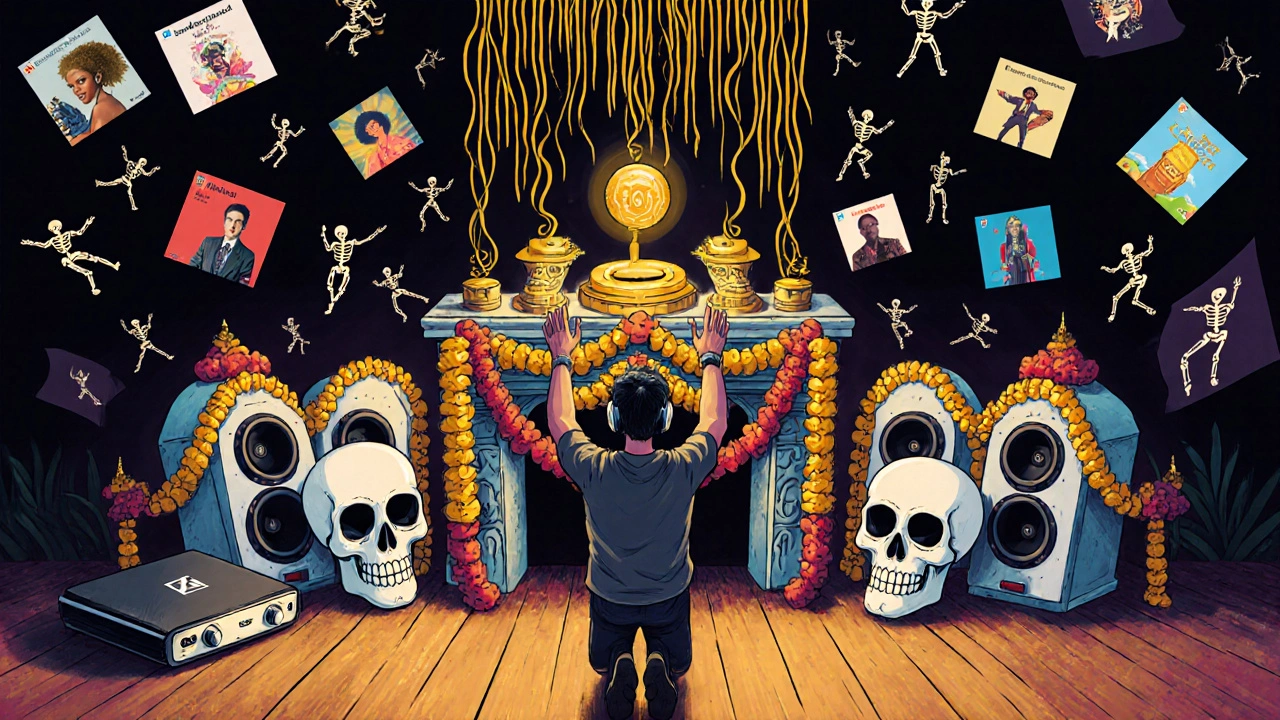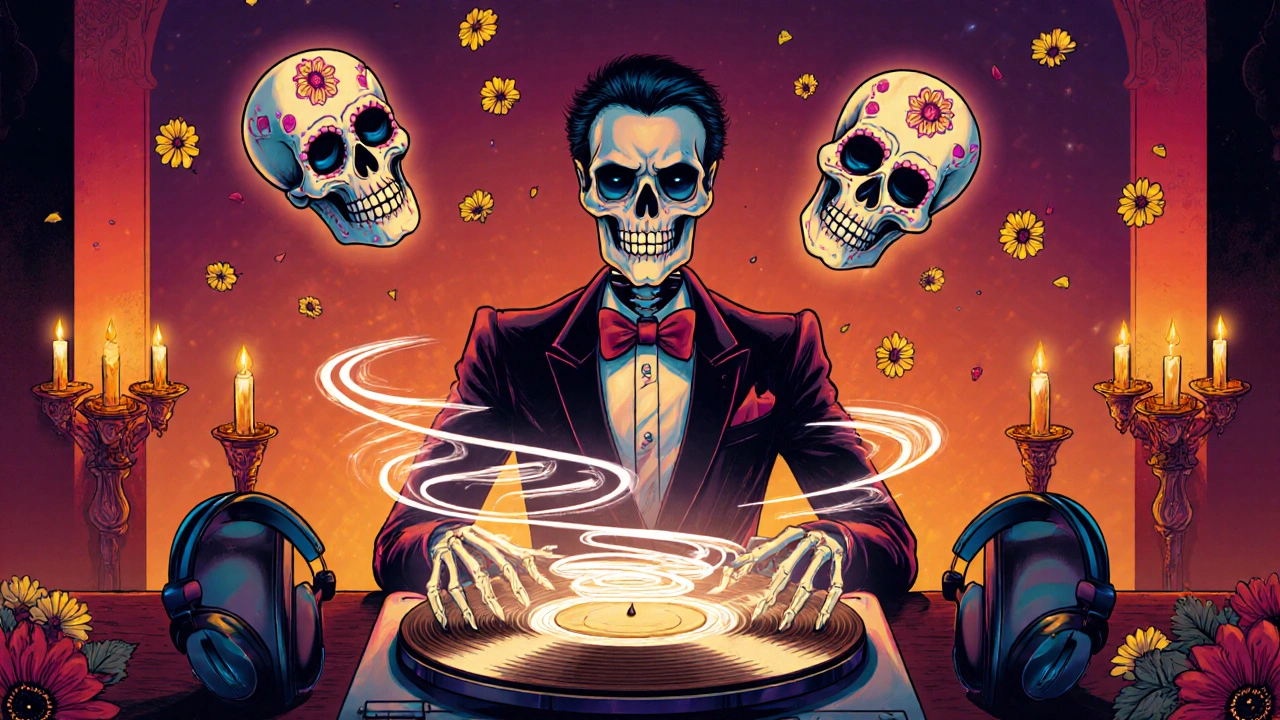If you care about how music actually sounds - not just what’s on the playlist - then streaming services that cut corners on audio quality are a waste of your time. You don’t need a $5,000 turntable to hear the difference between compressed MP3s and true high-resolution audio. You just need the right service. The best music streaming for audiophiles doesn’t just offer more songs; it delivers sound the way artists and engineers intended it to be heard.
What Makes a Streaming Service Truly High-Quality?
Not all streaming services are built the same. Most popular platforms like Spotify and YouTube Music use lossy compression to save bandwidth. That means they throw away parts of the audio signal - often above 16 kHz or below 40 Hz - to shrink file sizes. For casual listeners, this might not matter. For audiophiles, it’s like watching a movie in 480p when you own a 4K TV.
High-quality streaming means at least 16-bit/44.1 kHz - CD quality. But the real difference comes with high-resolution audio: 24-bit/96 kHz or higher. These files retain the full dynamic range and subtle details that get lost in compression. You hear the breath before a singer hits a note. You hear the wood of the guitar body resonate. You hear the room acoustics in a live recording.
Services that offer this don’t just label it as “high quality.” They prove it with transparency: bit depth, sample rate, and source files. If a service doesn’t tell you exactly what you’re getting, it’s not serious about sound.
Tidal: The Pioneer of Hi-Res Streaming
Tidal was one of the first to bet big on audiophile-grade streaming. Launched in 2014, it quickly became the go-to for musicians and engineers who wanted their work heard without compromise. Today, Tidal offers two tiers: Premium at 320 kbps AAC and HiFi at 1411 kbps FLAC - that’s CD quality. But its crown jewel is Tidal Masters, which streams true high-resolution audio up to 24-bit/192 kHz.
What sets Tidal apart is its direct partnerships with studios and labels. Thousands of albums are mastered directly from the original session files - not remastered from CDs. You can stream albums by Beyoncé, Radiohead, and Adele in the exact mix the artist approved. Tidal also shows you the mastering details: sample rate, bit depth, and even the studio where it was recorded.
It’s not the cheapest option, but if you want the closest thing to a studio monitor in your living room, Tidal delivers.
Qobuz: The Audiophile’s Secret Weapon
Qobuz is less known in the U.S., but in Europe, it’s the gold standard. Founded in France in 2007, it was built by engineers who refused to accept streaming as a compromise. Qobuz offers 16-bit/44.1 kHz (CD quality) and 24-bit/192 kHz streaming - all sourced directly from the label’s original masters.
Unlike other services, Qobuz also lets you buy and download albums in FLAC format, no subscription needed. You own the files. That’s rare. And if you want to build a library that lasts, this matters. Qobuz’s catalog includes deep cuts from jazz, classical, and indie labels you won’t find elsewhere.
Its interface is clean, no ads, no algorithm-driven playlists. You browse by album, artist, or curated editorial lists written by real critics, not bots. The sound quality is consistently excellent - no volume normalization, no loudness war tricks. What you hear is exactly what was recorded.
Qobuz is the choice for those who treat music like fine wine: you don’t just drink it - you savor it.

Apple Music: The Quiet Contender
Apple Music quietly rolled out lossless and hi-res streaming in June 2021. By 2025, it has over 80 million tracks available in lossless quality - from 16-bit/44.1 kHz up to 24-bit/192 kHz. It’s included in the standard $10.99/month plan, no upgrade needed.
Apple’s advantage? Integration. If you use an iPhone, iPad, or Mac, you get automatic playback of the highest quality your device supports. AirPods Pro 2 and Apple’s newer headphones decode Apple Lossless (ALAC) in real time. Even older wired headphones get full fidelity if connected via USB-C or Lightning.
Apple doesn’t label tracks as “Mastered for iTunes” anymore, but the catalog still includes tens of thousands of albums remastered from original analog tapes. You’ll find classic rock albums from Led Zeppelin and Pink Floyd in hi-res, along with modern indie releases.
It’s not as transparent as Tidal or Qobuz about mastering details, but for most listeners, the difference in sound is undeniable. And for the price, it’s hard to beat.
Amazon Music Unlimited: High-Definition Without the Hype
Amazon Music Unlimited offers a tier called “Ultra HD” that streams up to 24-bit/192 kHz. It’s available to Prime members for $12.99/month or $9.99/month if you already pay for Prime. That makes it one of the most affordable ways to get hi-res audio.
Amazon’s catalog includes over 100 million tracks, with over 50 million available in Ultra HD. The catch? You have to manually enable it in the app settings. By default, it streams at 320 kbps. Most users never change it.
But if you do, the difference is clear. Amazon’s hi-res files are sourced from major labels and include many classical and jazz recordings that are hard to find elsewhere. It doesn’t have the curation of Qobuz or the artist partnerships of Tidal, but for sheer volume and value, it’s a strong option.

What You Need to Hear the Difference
Having a great streaming service means nothing if your gear can’t deliver it. You can’t hear 24-bit/192 kHz through Bluetooth earbuds. The codec limitations of AAC or SBC strip away most of the detail.
For true high-resolution audio, you need:
- A wired connection: USB-C, Lightning, or 3.5mm jack (preferably with a DAC)
- A dedicated digital-to-analog converter (DAC): Even a $50 USB DAC like the FiiO Q1 Mark II makes a noticeable difference
- Quality headphones: Sennheiser HD 660 S2, Beyerdynamic DT 900 Pro X, or Sony WH-1000XM5 (with wired mode enabled)
- Or a good speaker system: Sonos Arc, KEF LS50 Wireless II, or a pair of bookshelf speakers with a quality amp
Most modern smartphones can output hi-res audio via USB-C. Android phones with Hi-Res Audio certification (like Sony Xperia models) handle it best. iPhones decode ALAC natively, so no extra hardware is needed - just a Lightning-to-3.5mm adapter or USB-C cable.
Which One Should You Choose?
Here’s how the top services stack up:
| Service | Max Quality | Price (Monthly) | Lossless Included? | Hi-Res Included? | Downloadable Files? |
|---|---|---|---|---|---|
| Tidal | 24-bit/192 kHz | $20.99 | Yes | Yes (Tidal Masters) | No |
| Qobuz | 24-bit/192 kHz | $15.99 | Yes | Yes | Yes (FLAC) |
| Apple Music | 24-bit/192 kHz | $10.99 | Yes | Yes | No |
| Amazon Music Unlimited | 24-bit/192 kHz | $9.99 (Prime) | Yes | Yes (Ultra HD) | No |
For the best balance of price, quality, and ease of use: Apple Music. It’s the most accessible and still delivers studio-grade sound.
For the deepest catalog and ownership: Qobuz. If you want to build a permanent library and care about editorial curation, this is the one.
For artist-approved sound and exclusive releases: Tidal. It’s the only one with direct ties to the creators.
For budget-conscious listeners who still want hi-res: Amazon Music Unlimited. It’s the most affordable path to high-fidelity streaming.
Why This Matters More Than You Think
Music isn’t just background noise. It’s emotion. It’s memory. It’s the difference between hearing a song and feeling it.
When you listen to a vinyl pressing of Kind of Blue and hear Miles Davis’s trumpet breathe between notes - that’s not nostalgia. That’s the music as it was meant to be heard. Streaming services that ignore this are selling you convenience, not art.
The best music streaming for audiophiles isn’t about having the most songs. It’s about having the most truth in the sound. It’s about letting the artist’s intent survive the digital age. And that’s worth paying for.
Can I hear the difference between lossless and regular streaming?
Yes - if you’re listening on decent gear. On good headphones or speakers, lossless audio sounds fuller, more detailed, and more natural. The high end isn’t shrill, the bass isn’t muddy, and instruments have space to breathe. You might not notice it on cheap earbuds, but on quality equipment, the difference is unmistakable.
Do I need special equipment for hi-res streaming?
You need a wired connection and a device that supports high-resolution audio. Most modern smartphones can output hi-res via USB-C or Lightning. For the best results, use a DAC (digital-to-analog converter) - even a basic one improves clarity. Bluetooth won’t cut it for true hi-res; the codecs compress the signal too much.
Is Apple Music really as good as Tidal or Qobuz?
For most people, yes. Apple Music offers the same 24-bit/192 kHz files as the others, and its catalog is massive. Tidal and Qobuz have better transparency about mastering sources and more niche genres, but Apple’s sound quality is on par. The main difference is in curation and ownership - not fidelity.
Why doesn’t Spotify offer lossless audio?
Spotify prioritizes reach and convenience over fidelity. Its business model relies on mobile users and low-bandwidth streaming. Lossless files use 5-10 times more data, which conflicts with its goal of being accessible everywhere. While it launched a “Spotify HiFi” plan in 2021, it was delayed indefinitely due to licensing and infrastructure challenges.
Can I stream hi-res audio on my smart speaker?
Most smart speakers like Sonos, Google Home, or Amazon Echo don’t support true hi-res audio. Even if you select Ultra HD or Tidal Masters, they downsample the signal to 16-bit/44.1 kHz or lower. For hi-res, you need a wired connection to a dedicated DAC or amplifier.


